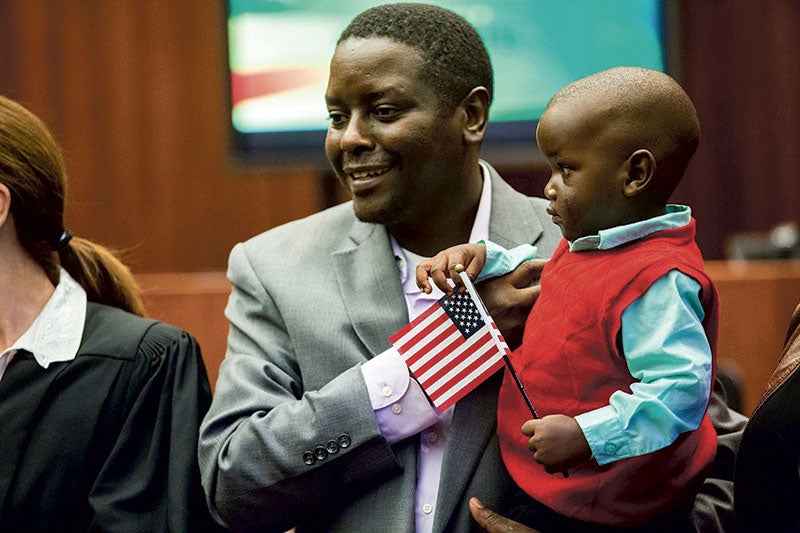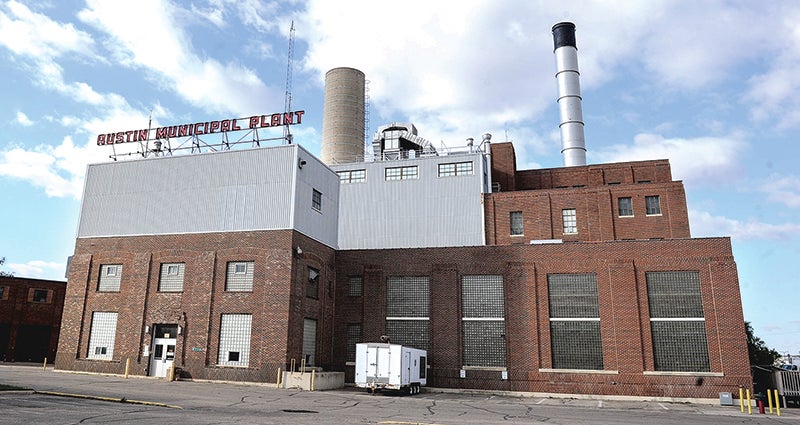Coalition: LGA, broadband will be next session
Published 10:11 am Tuesday, October 20, 2015
Local government aid and broadband infrastructure are going to be vital for development and growth in Greater Minnesota cities, according to a Greater Minnesota advocacy group.
Tim Flaherty, an attorney and shareholder with the Coalition of Greater Minnesota Cities (CGMC), addressed the Austin City Council Monday about issues from this past legislative session and issues the coalitions expects to focus on in 2016. He also visited with several Austin leaders and agencies.
After several Republicans ousted Democrats in the Minnesota House in the 2014 elections, 2015 was supposed to be the Greater Minnesota session, a goal Flaherty said he supported. However, he said that’s not how the session played out. Despite an estimated surplus of about $2 billion at the start of the session, Flaherty said the 2015 session was largely a failure.
The coalition had goals of returning LGA to 2002 levels and passing Greater Minnesota economic development programs meant to focus on workforce hosing, job training, broadband and a Business Development Infrastructure Program.
CGMC also targeted environmental reforms and a comprehensive transportation package. Few of those proposals were fully supported by the Legislature.
Though there was bipartisan support on many of CGMC’s proposals from the House and Senate, Flaherty said the House and Senate still failed in 2015 from the coalition’s perspective.
“We saw that the focus on tax cuts really crowded out investments in Greater Minnesota,” Flaherty said.
Now, the coalition is looking ahead to 2016. After calling for $100 million in broadband in 2015 and only getting a $10.8 million package, the coalition plans to call for $50 million from the surplus in 2016 to support broadband infrastructure.
“If you want to talk about growing your tax base, growing your population, growing your business community, broadband is not an option, it’s a necessity,” Flaherty told the council. “You’ve got to get that in your mind.”
However, broadband can’t come without maintaining and growing local government aid, Flaherty said.
“The top priority for us is going to be local aid,” Flaherty said. “It’s fine if we get broadband, but if you lose your local aid program, it’s going to kill the community.”
LGA will again be a focus session in 2016 after the GOP-led House ended up cutting LGA to “first-class” cities like Minneapolis and St. Paul. The House did so by promoting what Flaherty described as erroneous claims about LGA, such as arguing that LGA was originally intended only for small, rural cities. However, Flaherty said those cities were part of the original formula, which was formed based on a formula inter to keep a balance in funding across the state.
“It keeps healthy communities around the state,” he said.
Flaherty and CGMC argue cuts to the first-class cities will threaten the LGA’s sustainability and will damage the objective formula that had been previously approved.
LGA has traditionally been based on property wealth, which has caused wealthier cities like Minneapolis and St. Paul’s share to decrease as Greater Minnesota’s share increased.
“As their property wealth went up in Minneapolis, their aid went down, which the way it’s supposed to work,” Flaherty said.
Without a tax bill approved last session, there was no change to LGA approved by the Legislature.
The coalition pushed in 2015 for a tax credit to incentivize growing workforce hosing infrastructure as a way of promoting growth through a state-private sector partnership. It proposed $100 million for workforce housing in, but a $5.4 million grant was passed. Flaherty argued the $5.4 million only equated to about 108 housing units, which could easily be absorbed by one community, while $60 million in workforce housing credits could make for 3,000 units. In 2016, it plans to seek $15 million in 2016 and $30 million in 2017.
CGMC is also strongly pushing broadband as a critical economic development issue that would benefit the entire state, and in 2016 it plans for call for $50 million from the general fund.
“For the life of me, I do not know why we haven’t gotten support at the legislature for a meaningful program, but we’re going to keep working on it, and we’ll see this next session,” Flaherty said.
The council appears primed to support broadband after getting an update on Vision 2020’s proposed $32 million Gig Austin project in September.
The coalition expects the transportation deadlock to continue, but it’s promoting a corridors of commerce program where highways around the state blend two-lane and four-lane highways.
The coalition also proposed scientific peer review of state environmental standards as a way to gauge potential costs and how the state will pay for the requirements.
After not attaining many of it’s goals, Flaherty called the 2015 session a disappointing one.
“A lot of unfinished business there at the Legislature,” he said. “We hope they do better this next session.”
Flaherty told Austin City Council members that 2016 success at the Legislature will depend on continued engagement from community leaders. With House and Senate due for an election in 2016, Flaherty said that will serve as an added incentive for them to get something down in the session.
Now, it looks like the state Legislature will have a $1 billion surplus headed into next year’s session, and the state can use to enact tax cuts or make investments or both.
“We would argue for some of both, of course,” Flaherty said.
Conversations
Southeast Minnesota Together Project Coordinator Bill Spitzer, the former mayor of St. Charles, also briefly addressed council members on upcoming listening and discussion sessions planned in Albert Lea, Owatonna and Winona.
The discussions will center on issues like a projected workforce shortage of about 45,000 jobs over the next 20 years.
“That’s something that we should all take to heart and say, ‘OK, what are we going to do about that? What kind of strategic plan do we need to make?’” Spitzer said.
For example, they could discuss engaging retired people to stay involved in the workforce.
Spitzer asked council members to encourage community members to attend the conversations in the other communities to make sure Austin has a voice.
“We want to make sure that everybody in this region around and in the Austin-Albert Lea are is at the table,” Spitzer said.




